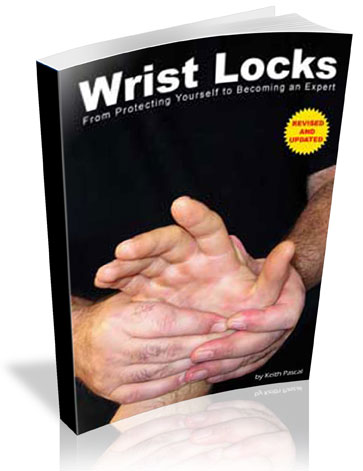There have been bodyguards, bouncers, security guards, and law-enforcement officials who have asked me about learning wrist locks and joint controls. They wanted to know which style I preferred that emphasized locks. Did I recommend chin na, ju jitsu, aikido, kali, or some other style?
Which Wrist Locks Style Is The Best?
Good question. After all, you want to learn the best, right?
Well, the answer isn’t a pat, one-style response. You see, all styles that offer locks do have some merit … for teaching wrist locks. After all, that is their bailiwick.
Still, there is an answer to that question.
Before I answer which style is best for learning locks, let me tell you something a little humorous about the different styles that feature joint controls….
Funny Wrist Locks Fact
When I first wrote Wrist Locks: From Protecting Yourself to Becoming an Expert, I tried to avoid being style specific. In fact, it was a main objective.
I wanted to appeal to joint-lockers of all styles. I did write a bit about the names of various locks with my suggestions for communicating with someone from a different style. But I pretty much avoided names from other styles, and instead invented my own.
So, what’s so funny about all of this?
Well, over the years, I have received hundreds, if not thousands of compliments … where I am thanked for writing a book specific to “their” style. In other words, the aikido folks liked that Wrist Locks was an aikido book. The ju jitsu crowd felt the same, except that the book was particular to their style.
And on it went. JKD folks appreciated the Bruce Lee flavor.
Here I was desperately trying to avoid linking to one style … and ironically, each one thought that I was showing an affinity toward their style.
Funny, don’t you think?
Quick Guide For Choosing a Martial Arts Style Featuring Locks
Rather than identifying the best martial arts style for joint controls, let’s instead get a few guidelines to help you choose a class or school offering locks:
1) Avoid schools that try to take a punch straight into a lock. This is dangerous; they need something to slow down the punch or deal with it “realistically” before locking.
2) Find a class that keeps using the same locks over and over. You want to spiral back to the same joint locks, so that you really perfect them.
3) Avoid schools that “always” have the students in cooperative mode. Eventually, you have to learn to snap a lock on a resister.
4) Find a teacher who will show you how to reverse and counter locks. The lock effected on you doesn’t have to be an end-all. You have options, including …
5) hitting. Avoid teachers who don’t teach you to escape some locking situations by hitting or kicking.
Last Piece of Advice
If I may be so bold … whether you buy my soft cover book on Wrist Locks or decide to stick with my free offerings, may I suggest that you get a flavor of realism in locking. Read my “stuff” for a while. Avoid techniques that seem like fantasy … and really perfect some of my suggestions.
Wrist Locks work for me. They work for my students. And I want them to work for you.
